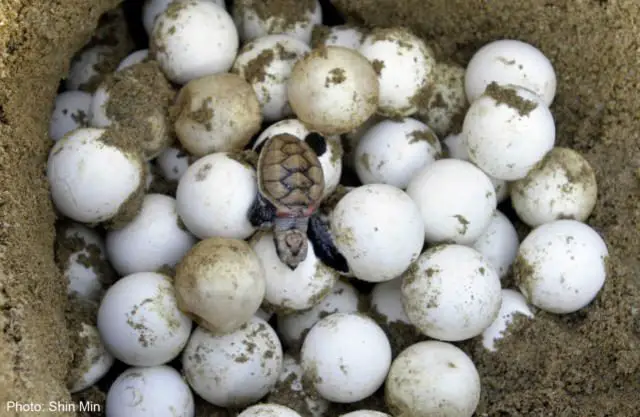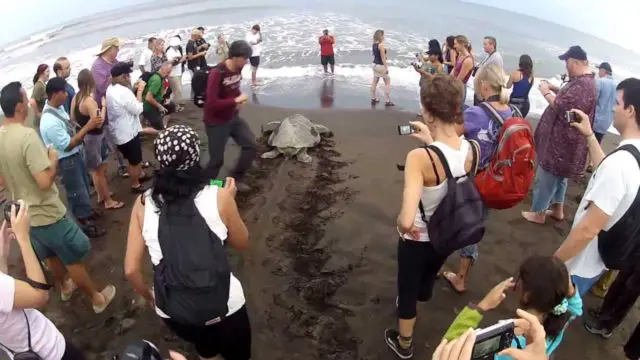
The Ostional National Wildlife Refuge – located in Guanacaste – seized 536 turtle eggs, illegally extracted, on August 18th. The seizure was greater than usual, but it is still happening every day.
“Unfortunately, there are detainees every month. Almost every night there is looting because this is a very strong problem”, explained the administrator of Ostional, Yeimy Cedeño. The illegal extraction of turtle eggs threatens the community’s conservation efforts, mainly because it encourages the black market, Cedeño explained.
This refuge is a particular place: it is the only coastal community in the country with authorization to extract sea turtle eggs. This is because, by involving the community, it has been possible to conserve these species and increase their presence.
The commercialization of these eggs is precisely the economic incentive in the community to conserve the turtles, explained Cedeño. To extract them, a scientific management plan is carried out, under the supervision of refuge biologists.
“When these illegal looting occurs, it is something very damaging for all those efforts that the community makes. Then all the illegal eggs are framed as coming from Ostional,” he said. In the latter case, the subject fled. But it is normal that there are detainees.
Seizures typically run to around 100 eggs, according to Cedeño. “Sometimes people are caught with a nest, which is little more than 100 eggs. But the last two seizures have been more than 500. It is variable,” he indicated.
Illegal extraction is more related to criminal gangs and not so much to people’s subsistence, since the community already has access to the eggs with the refuge’s management plan, he explained.

Different egg retrieval
But there are important differences between illegal and community eggs, Cedeño explained. The main one is that, illegally, turtles with a high probability of survival end up dying. “Normally the illegal looting is on solitary turtles, which are never extracted in Ostional. These are the individuals who are more likely to develop because they are in a low competition scenario,” he said.
On the other hand, the community only extracts eggs in “arrivals” of thousands of turtles in a few days, where the probability of survival for the eggs is less than 10%. Still, they only extract 5% of all available.
“There can be up to 12 nests in a square meter. In that scenario, naturally the chances of survival of these eggs are very low. The community extracts the eggs that are already in this scenario”, explained the refuge manager. Still, the villagers work so that as many as possible can survive, by cleaning the beaches – to remove obstacles from the sea – and patrolling to prevent illegal extraction. Cedeño warned that the eggs from Ostional are identified in their labeling and billing, so these are important details to avoid buying illegal eggs.
Arrivals
Especially during the rainy season, Kemps Ridley turtles – in serious danger of extinction – arrive in Ostional approximately once a month. In a rainy month, between 90,000 and 180,000 turtles can come per month, according to data from the National System of Conservation Areas (Sinac).
Every five years, the refuge authorities must update the management plan to ensure that it is not affecting the turtle population. The last one was made in 2016. These arrivals occur in only nine sites globally, due to the threat to Olive Ridley turtles. Among these beaches, Ostional and Playa Escobilla (Mexico) are the two with the highest presence of turtles. These also occur at Playa Nancite, in the Santa Rosa National Park.

